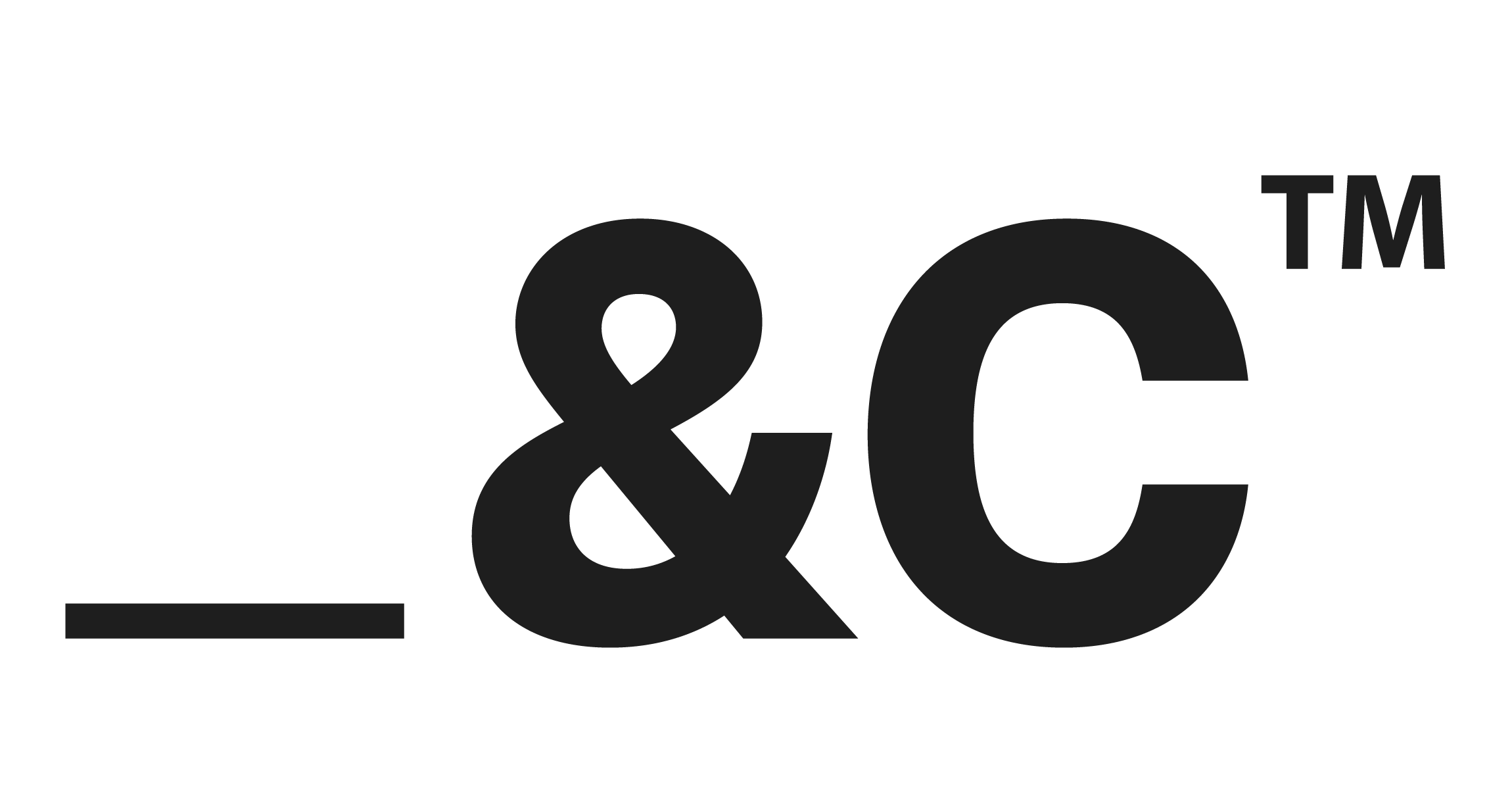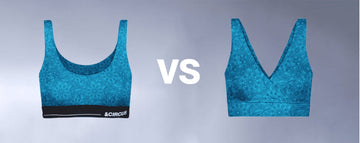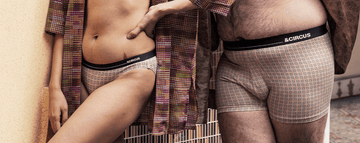Quick Listen:
The lingerie industry once thrived on a singular, unattainable vision of beauty: flawless models in delicate lace, their bodies molded to a narrow ideal. That era is fading. Today's shoppers demand more underwear that embraces their unique shapes, aligns with their values, and respects the planet. Body positivity has surged from a catchphrase to a cultural mandate, but what does it take for a brand to authentically embody this ethos? It's not enough to expand size charts or craft catchy slogans. True body positivity demands a radical rethinking of design, representation, and responsibility. Brands like Tailor and Circus are leading the charge, weaving inclusivity, sustainability, and real-world diversity into the fabric of their mission.
A New Era for Lingerie
Step into any retail space, and the shift is palpable. The days of Victoria's Secret's glitzy runway spectacles complete with crystal-encrusted wings and fantasy bras are giving way to a more inclusive vision. In 2023, after a four-year pause, the brand relaunched with a reimagined World Tour, blending fashion and documentary-style storytelling. Models like Winnie Harlow, who lives with vitiligo, showcased designs alongside mannequins representing diverse body types. This overhaul, set to stream on Amazon Prime Video, reflects Victoria's Secret's attempt to shed its male-centric past, which alienated many and triggered years of declining sales.
This transformation extends beyond one brand. The global lingerie market, valued at $13.8 billion in 2022, is forecast to reach $27.3 billion by 2030, growing at a compound annual growth rate (CAGR) of 8.9%. In the U.S., the lingerie sector, worth $23.2 billion in 2024, is projected to hit $34.6 billion by 2030, with a CAGR of 6.97%. Driving this growth is a consumer base that prioritizes comfort, inclusivity, and eco-conscious choices over outdated notions of allure. The no-size underwear market, expected to reach $1.2 billion by 2025 with an 8.6% CAGR through 2033, highlights the appetite for flexible, body-affirming designs.
Tailor and Circus: Redefining Authenticity
Tailor and Circus, an Indian innerwear brand, exemplifies this new paradigm. Their collections prioritize inclusivity with a broad size range and sustainable materials like organic cotton and bamboo, ensuring comfort without compromising style. Unlike the polished campaigns of the past, their marketing celebrates real bodies stretch marks, curves, and all reflecting the diversity of their audience. This approach isn't just feel-good; it's a deliberate rejection of the industry's airbrushed legacy.
They're not alone in this mission. ThirdLove has carved a niche with innovative fit solutions, offering half-cup sizes and virtual consultations to accommodate varied body shapes. Savage X Fenty, under Rihanna's leadership, has redefined representation by showcasing every skin tone, size, and gender identity in its bold campaigns. These brands aren't merely selling products; they're fostering a sense of inclusion. Consumers are more loyal to brands that align with their values, underscoring the power of authentic representation.
Sustainability as a Pillar of Inclusivity
Body positivity and sustainability are inseparable in today's market. The underwear industry is projected to grow at an 8% CAGR through 2031, fueled by rising incomes and a demand for ethical products. Shoppers increasingly seek underwear made with biodegradable fabrics and produced through fair labor practices. Tailor and Circus, for instance, uses low-impact dyes and partners with fair-trade suppliers to reduce environmental harm. This resonates deeply with younger consumers, who are willing to pay a premium for sustainable goods.
Yet, sustainability poses challenges. Eco-friendly materials and ethical production often carry higher costs, putting pressure on smaller brands. Even industry giants face skepticism. While Victoria's Secret's inclusive rebrand has earned praise, some critics view it as a pragmatic response to market pressures rather than a heartfelt shift. The threat of body positivity washing where brands tout inclusivity without substantive action remains a concern. Today's consumers are discerning, quick to call out hollow promises.
Navigating the Challenges
Embracing body positivity isn't without obstacles. Expanding size ranges demands sophisticated supply chains and inventory systems, which can squeeze profits, especially for smaller brands like Tailor and Circus. Cultural challenges also loom: how do you celebrate diversity without veering into tokenism? As Vogue Business reports, post-pandemic consumers prioritize comfort, with many forgoing traditional bras entirely. Brands must innovate while staying true to their ethos, ensuring designs meet real-world needs rather than chasing fleeting trends.
There's also the risk of pushback. Expanding inclusivity can draw criticism from those wedded to traditional beauty standards. Yet, the evidence is compelling: inclusivity drives growth. The no-size underwear market's projected $1.2 billion valuation by 2025 signals a consumer base eager for change. Brands that resist this shift risk irrelevance in a rapidly evolving industry.
The Business Case for Inclusivity
The financial argument for body positivity is undeniable. The ladie's underwear market is thriving, propelled by e-commerce and a demand for diverse, functional designs. Online platforms have leveled the playing field, enabling brands like Tailor and Circus to connect with global audiences through tailored shopping experiences. This isn't just about revenue; it's about building lasting relationships. When a brand makes a customer feel valued, loyalty follows often with referrals in tow.
Inclusivity also differentiates brands in a saturated market. With shapewear and loungewear fueling U.S. market growth, innovative designs like adaptive fabrics or gender-neutral options offer a competitive edge. Tailor and Circus has leaned into this, creating versatile pieces that resonate across identities. This strategy fosters trust, transforming one-time buyers into brand advocates.
The Future of Body-Positive Underwear
What lies ahead for body-positive lingerie? Experts foresee technology playing a pivotal role, from AI-powered fit tools to 3D-printed garments customized for individual bodies. But technology alone won't suffice. Authenticity remains the cornerstone, requiring brands to listen to their customers and uplift underrepresented voices. Tailor and Circus sets a strong example, partnering with body-positive advocates to inform its campaigns and designs.
For brands aiming to embrace this movement, the roadmap is clear: commit to diverse representation, invest in sustainable practices, and design with real bodies at the forefront. Offering a few plus sizes or a single diverse model won't cut it. True inclusivity demands a holistic approach, from ideation to execution.
As I pull on a pair of Tailor and Circus briefs soft, sustainable, and designed for bodies like mine I'm struck by the broader truth. Body positivity isn't a fleeting trend; it's a transformative force reshaping the lingerie industry. It's about creating space for every body, every story, every identity. In the underwear drawer of tomorrow, there's room for us all.
Disclaimer: The above helpful resources content contains personal opinions and experiences. The information provided is for general knowledge and does not constitute professional advice.
You may also be interested in: Role of the Fashion Industry in Shaping Body Image
Uncomfortable underwear shouldn't steal your confidence. At Andcircus, we craft ultra-soft, sustainable Lenzing Modal Micro innerwear for every body, XS to 5XL. From briefs to bras, our custom packs fit you perfectly. Shop risk-free with our 100% satisfaction guarantee and embrace comfort that includes everyone. #LoveEveryBody. Shop Now!







































